*Note* I originally wrote this piece for the 2018 CBC Short Story Contest.
It called to me—the Old Stone Butter Church. It’ll call to you, too… if you’re ready.
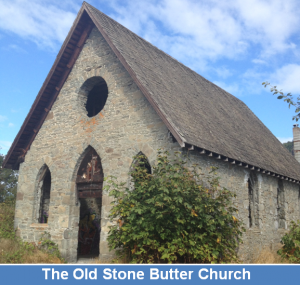 The Old Stone Butter Church called from a rise, where it stands on Comiaken Hill keeping forlorn watch over Canada’s Cowichan River estuary and traditional lands of the Khowutzun First Nations People on British Columbia’s southern Vancouver Island. It’s stood fifteen decades—the Old Stone Butter Church—and it’s built to withstand fifteen more.
The Old Stone Butter Church called from a rise, where it stands on Comiaken Hill keeping forlorn watch over Canada’s Cowichan River estuary and traditional lands of the Khowutzun First Nations People on British Columbia’s southern Vancouver Island. It’s stood fifteen decades—the Old Stone Butter Church—and it’s built to withstand fifteen more.
They handcrafted the Old Stone Butter Church with local basalt and sandstone—they being Khowutzun workers and Christian settlers paid with churned butter from the priest’s dairy herd. A half-pound of butter for a day’s laying stone. Fair trade, you could say, for those confirmed in Catholic faith and those cautiously caring their indigenous values.
It called to me on a November day when Quamichan winds blew plate-sized, golden maple leaves from soaking-wet branches, and browned evergreen needles fell from hulking firs mixed with over-protective cedars. I parked at the hill’s base along Tzouhalem Road. Step by slippery step over leaf-covered moss, I ascended the flagstone pathway, unsurely gripping the iron pipe handrail and passing a gauntlet of tree-bark faces independently judging my passage.
The Old Stone Butter Church loomed above, silhouetting what’s left of its classic cruciform architecture—masonry walls with embedded buttresses and a high-pitch, split-shake roof matching the backdrop of a gray fall sky. Its tired facade of vacant gothic window frames and a long-gone wooden front door gave a sad look compared to what was a once-thriving, nineteenth-century pretense happily beckoning parishioners within.
Outside, overgrowth of green salal and red salmonberry elbowed the church’s rock structure, inviting that sacred place back within the fold of nature’s harmony. Beyond the church, in a grassy field, a lone concrete cross marked the resting space of an elder in eternity, amid a grazing flock of wet, woolly sheep. And overhead, a ruling osprey screeched, outshouting the mass of raven and crow disciples perched below.
I stopped at the open doorway. It still called—the Old Stone Butter Church. Now louder… and longer… with its clear and definite message.
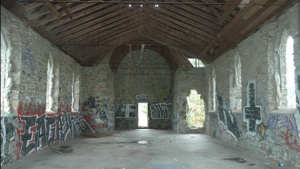 Shifting foot to foot, I surveyed the open vestibule and peered through cold, lonely dampness beyond the rotting jack arch that once welcomed worshipers to the warmth within. What is it? A move forth. What does the church want of me? With short and calculated steps, I crossed the narthex threshold and passed between the light and the dark.
Shifting foot to foot, I surveyed the open vestibule and peered through cold, lonely dampness beyond the rotting jack arch that once welcomed worshipers to the warmth within. What is it? A move forth. What does the church want of me? With short and calculated steps, I crossed the narthex threshold and passed between the light and the dark.
I shivered, yet sweated. My sixty-year-old eyes adjusted to the dim, and they scanned the nave where bench rows once sat a gathered assembly under the pious approval of a scissor-vault ceiling. The floor—it was solid—like some form of mixed concrete pressed from the earth and emitting a gaseous odor not like old eggs but more as old soul.
 Daylight shafted through openings that stained glass once filled and an oak door once barred. In ethereal twilight, I saw how a generation of vandals desecrated the old church making mockery of its teachings through graffiti sprayed in yellow and blue and red and black-upon-white with two offensive letters acting as parentheses enclosing the hallowed entrance—one a block-lettered “S” topped with a circular halo, the other a “B” crowned by devil horns.
Daylight shafted through openings that stained glass once filled and an oak door once barred. In ethereal twilight, I saw how a generation of vandals desecrated the old church making mockery of its teachings through graffiti sprayed in yellow and blue and red and black-upon-white with two offensive letters acting as parentheses enclosing the hallowed entrance—one a block-lettered “S” topped with a circular halo, the other a “B” crowned by devil horns.
I turned, facing the crossing leading to the apse and the altar. More graffiti defaced this sanctuary and some brute force had ripped rocks from the transcept, callously throwing them about with no regard for the past and what this sacristy symbolized.
I hear it shut—the vestibule door. It wasn’t a shove. Certainly not a slam. It was a solid and securing sound coinciding with a reassuring temperature change where the chill subsided as the light manifested from dismal dim to calming clarity. I looked back, and I watched as the circular window space above the now-present, paneled oak door turned from a clearing sky to a marvelous consecrational cross consumed with an enlightened rose-colored glow.
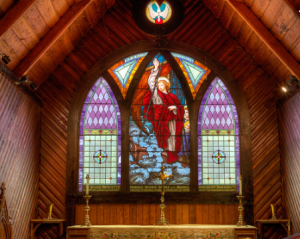 To my right and to my left, the gothic arches morphed into leaded stained glass windows of sun-filtered images showing Christian stories from Testaments new and old. Around me, the pews transformed, becoming clear-grained fir boards waxed to a shine with their backs holding leather-bound books filled with good words. Below, the gritty floor transpired into turquoise and lavender and emerald mosaics telling their version of millennia’s history.
To my right and to my left, the gothic arches morphed into leaded stained glass windows of sun-filtered images showing Christian stories from Testaments new and old. Around me, the pews transformed, becoming clear-grained fir boards waxed to a shine with their backs holding leather-bound books filled with good words. Below, the gritty floor transpired into turquoise and lavender and emerald mosaics telling their version of millennia’s history.
And ahead, a crucifix appeared beyond the crossing, before the chancel, mounted on the east wall above the now-formed, maple-wood pulpit draped in a ruby cloth with virginal white braids. Radiant light illuminated the old rugged cross from the cedar-paneled barrel vault—the full-sized cross supporting an exquisite supernatural figure cruelly spiked through the wrists and ankles—His face a balanced chastity of agony and ecstasy, perfectly representing the sins of the incarnate here on earth and the resurrected world of salvation far beyond our prison of mortal comprehension.
“Friend, it’s good to see you. It’s nice to know you care.”
The voice was around me. Not over, not under, not behind, nor ahead. It was everywhere within and without me. It was not male. It was not female. The best I can describe—a neutral voice with the feminine intelligence and majestic confidence of Meryl Streep and the beautiful baritone authority of Morgan Freeman. It was the voice of the Old Stone Butter Church.
“You… you called…” Humbly, I responded. I wasn’t scared nor alarmed. Not surprised or astounded. It felt natural to accept and submit, realizing some profound life change was occurring—I was entering an epiphany—and I was duty-bound to listen. “Why? Why have you called?”
“Because you are ready.” The voice was matter-of-fact. Straight-to-the-point. Kind of like Spock.
“Ready for… what? I… I don’t understand.” Perplexity stifled my speech.
“When the student is ready, the teacher shall appear.” The church’s voice confidently quoted a proverb. “You are ready to accomplish a task for me. I’ve called to instruct you.”
 It was instinct to find the mouth—to look at the lips—that uttered my calling. I looked aside, viewing a black cast iron stove now convecting heat waves with the sensual smell of burning coal. Candle flickers accented gas lamps, allowing an ideal taste of comfort with glory. Only a parish remained to assemble, and this virtual reality of a bygone era would be consciously complete.
It was instinct to find the mouth—to look at the lips—that uttered my calling. I looked aside, viewing a black cast iron stove now convecting heat waves with the sensual smell of burning coal. Candle flickers accented gas lamps, allowing an ideal taste of comfort with glory. Only a parish remained to assemble, and this virtual reality of a bygone era would be consciously complete.
“How can… What can… I possibly do?”
“I need your help spreading a message.” The church was clear and concise, but firm. “To connect with people like yourself who are ready to receive the message. Several messages, actually, wrapped into one.”
“I… I… I’ll do what I can.”
 An apprehensive urge overwhelmed me. I’m not Catholic, not baptized or raised in the faith. And I’m not a practicing Christian, but I had an instant respect for this church’s voice. There was something here I’d missed in my life. Now, coming into a period of retirement and retrospection, it was time. Time to listen. Unconsciously, I knelt at the crossing—genuflecting, I’m told they call it—and I opened my mind.
An apprehensive urge overwhelmed me. I’m not Catholic, not baptized or raised in the faith. And I’m not a practicing Christian, but I had an instant respect for this church’s voice. There was something here I’d missed in my life. Now, coming into a period of retirement and retrospection, it was time. Time to listen. Unconsciously, I knelt at the crossing—genuflecting, I’m told they call it—and I opened my mind.
“I’ll outline my message…” The church paused, as if reflecting upon itself. “First, a bit of my background… how I came to present the physical state you walked to… how I lost tangible dignity but retained the inner strength and self-respect you see now.”
I stood, turning about and taking in a marvelous blend of tradition, order and décor. How something, someone, of such splendor could be so maliciously neglected seemed incomprehensible. And, how a bastion of civilization like a carefully crafted church could miraculously survive, despite infernal attempts to destroy it. Clearly, there was an answer in the message I was about to pass on.
“I had ten years of good run.” The church mused. “My builders were mixed. Local native people and immigrant Europeans. It’s much like how the country, the continent, was civilized… if you choose to use that term. But, like all organizations, there has to be mutual respect for every culture, faith, and belief involved. That’s a grounded principle in every society, regardless if Christian based, traditional native, or any type of religion based on history, doctrine and decent human principles. That didn’t happen with me, now called the Old Stone Butter Church.”
I detected emotion. The voice reminisced as if struggling to resolve the past and conform to, yet help shape the present and future. I listened.
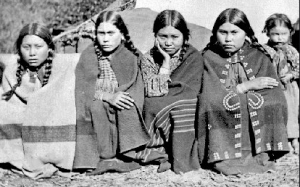 “My decline began with a culture clash. Mistrust and suspicion. As you saw, my crafters had considerable skills and built my structure soundly with what they had. Rock. Wood. Mortar. They appointed me with handsome glass and hand-wrought iron. They built me as they saw fit, according to one-sided specifications. That was the Christian spectral view. Not the vision of spirituality from the Khowutzun people who have their own teachings to be respected.”
“My decline began with a culture clash. Mistrust and suspicion. As you saw, my crafters had considerable skills and built my structure soundly with what they had. Rock. Wood. Mortar. They appointed me with handsome glass and hand-wrought iron. They built me as they saw fit, according to one-sided specifications. That was the Christian spectral view. Not the vision of spirituality from the Khowutzun people who have their own teachings to be respected.”
“What happened?” I was enthralled. “How did you fall into such shamble?”
“After ten years, the division between Caucasian settlers and indigenous landowners became unbearably stressed. Intolerance, by some in my Christian congregation, of native beliefs and values… not all by any means… forced my aboriginal followers to evict the parish from their lands. Oh, there were falsehoods spread of me being haunted and possessed by dark forces, but the reason… the truth… remains as often is… cultures are ignorantly disrespectful of each other despite a clear interconnectedness, and universal value, of all humanity.”
“And?”
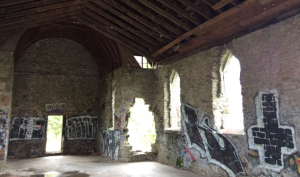 “They stripped me of possessions… leaving me to stand bare… a witness to the world of religious strife and the resilience to represent truth for those wishing to find it. They… the Christian parishioners… took my stained glass windows, my oak doors, my pews, my altar, and my beloved crucifix away to a new location on non-native land and erected a new church to represent their clique. I remained empty… the Old Stone Butter Church… a vulnerable victim to vandals.”
“They stripped me of possessions… leaving me to stand bare… a witness to the world of religious strife and the resilience to represent truth for those wishing to find it. They… the Christian parishioners… took my stained glass windows, my oak doors, my pews, my altar, and my beloved crucifix away to a new location on non-native land and erected a new church to represent their clique. I remained empty… the Old Stone Butter Church… a vulnerable victim to vandals.”
“This is a shameful story.” I felt a throat lump, a sense of pity, yet profound curiosity. What do you want me to do?
“But, they didn’t take my spirit…
“…no…”
“… and you’re wondering what I want you to do. I need to confide before revealing my message. There is nothing holy about me. I’m just a human-built old rubble block, but I’m symbolic of a timeless truth. You don’t need me as a physical building to worship in or pray to. You can do that anywhere, and that’s what today’s masses are discovering… what they’re seeking. But most haven’t received the message, yet they’re ready. Many describe themselves as ‘Nones’. That being they don’t subscribe to any set religion.”
“Yes.”
“These are the ones I want to reach. It’s not that they’re atheist or agnostic, and they’re not so indoctrinated in religious dogma that they can’t be reached. No. Most Nones are too busy with life’s concerns to stop and reflect on what’s really important… what the core truth is in mortal existence and how I… an old relic… can help them ground.”
“I follow your past. And think I understand where you’re going.” I stayed fast, waiting for revelation. “But why call on me?”
“Because you are one of the most powerful people in society. Your kind has always been the most influential. The most persuasive force.”
“What? How am I powerful? I’m not an emperor, a politician… business tycoon. And I’m by no means an entertainment or religious icon.”
“Remind me of what you do for a living.”
“I’m… I’m a writer. I write books. Articles. Web pages. Do op-eds for the HuffPost. Like, whatever pays the bills.”
 “Precisely. You’re a scribe. Scribes have always been the most powerful force in humanity. Emperors? Politicians? Tycoons? And religious icons and pop-entertainers? They come and they go and they’re at the mercy of scribes. They beg scribes for exposure… favorable, if they can get it. Otherwise, they fall at the scribes’ peril. Not at a foe’s sword but at a scribe’s quill.”
“Precisely. You’re a scribe. Scribes have always been the most powerful force in humanity. Emperors? Politicians? Tycoons? And religious icons and pop-entertainers? They come and they go and they’re at the mercy of scribes. They beg scribes for exposure… favorable, if they can get it. Otherwise, they fall at the scribes’ peril. Not at a foe’s sword but at a scribe’s quill.”
“You want me to write for you?” I wasn’t sure. “I am… honored… privileged… what is your message… how do you want my approach?”
“Getting my word out has never been easier. But…” The church calculated. “Telling it properly is the challenge. Today, you, the scribe, have unlimited access to the masses. You have your blog and website. You have social media platforms. You have connections with mainstream media you’ve built through years of credibility as a respected scribe. People will listen to you. If you present my message in a way they understand, it will help them function in the world as productive and contributing society members. And they will spread it through word of mouth… rather, today, word of mouse.“
“Word-of-mouse…”
“It starts with something being in it for them… especially the vulnerable Nones who have limited grounding or conviction in conventional spiritual health and worship-prescribed happiness.”
“What should I tell them?”
 “Start my message by reassuring people that no religion has a monopoly on truth. But, most of the world’s religions have universal core concepts in their doctrine. Your human nature… it’s the cyclical nature of the universe… like the Khowutzen people knew and taught. You move forward from birth to death, after which you go back where you came from. It’s what you do unto, with, and for others during your earthly life now that matters. Not stocking-up self-important spirituality for some later event. As a side note, the concepts of heaven and hell are what you make for yourself while you exist here in human form.”
“Start my message by reassuring people that no religion has a monopoly on truth. But, most of the world’s religions have universal core concepts in their doctrine. Your human nature… it’s the cyclical nature of the universe… like the Khowutzen people knew and taught. You move forward from birth to death, after which you go back where you came from. It’s what you do unto, with, and for others during your earthly life now that matters. Not stocking-up self-important spirituality for some later event. As a side note, the concepts of heaven and hell are what you make for yourself while you exist here in human form.”
I nodded. There was no need for note taking.
“There is no limit to your human potential, but there is a limit to the time you have in your ethereal lifespan. It’s incumbent for you to use your precious time as wisely as you can. That means enlightening… knowing… your internal world of health and welfare so you can help others to help themselves. That’s my core message… it’s your purpose. Know yourself and be healthy in yourself. Then help others to help themselves. Build your placid world not with vain material assets… ultimately, build your internal peace with placid external relationships. Doing so… you make yourself and others… happy. And you don’t need a church for that.”
The church said no more. I heard what was in it for the Nones and the Scribes. It was now time to go.
Its candles and lamps extinguished. Its coal stove went out. Its stained glass turned back to open sky, and its oak front door released. Its pews were gone as was its crucifix holding the representation of human divinity. And its smell… the smell of old soul… returned.
 I left the Old Stone Butter Church with a purpose—a purpose I suppose was there all along. I’ve new-found happiness and reinvigorated spiritual health. My mission is sharing the message with those receptive to hearing timeless truth. Now, I’m at my keyboard with the power of the internet—billions of interconnected souls potentially at my reach—and I start by scribing these words:
I left the Old Stone Butter Church with a purpose—a purpose I suppose was there all along. I’ve new-found happiness and reinvigorated spiritual health. My mission is sharing the message with those receptive to hearing timeless truth. Now, I’m at my keyboard with the power of the internet—billions of interconnected souls potentially at my reach—and I start by scribing these words:


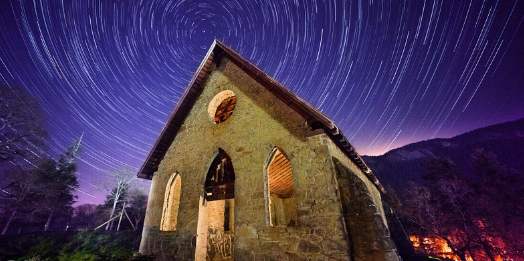
Beautifully written, Garry. And an important message for us all. Thanks. Loved it! Sharing everywhere…
Aw, thanks Sue! I wasn’t sure how this would go over when I wrote it last year. I entered it in the CBC short story contest but never heard back. I don’t even know if they opened it but whatever… I was also concerned about publishing this on my blog (you know how we all doubt our own writing) because I have a few old cop buddies who regularly read this thing and I could hear them going, “Okay. Rodgers finally lost it. He thinks a f’n church talked to him. Maybe we should pitch-in and get him some help.”
A great story, Garry. I love an authentic voice. Getting in the zone (creative subconscious) and letting the words fly is one of the bravest and smartest things any writer can do.
Thanks, Harvey. It’s been awhile since I’ve done this type of creative writing, especially short story form. Getting in the zone for this was a very vivid experience where I let my imagination run and this just came out. That’s a hard momentum to achieve in full-length books and nearly impossible for tech writing. I appreciate your comment!
If I may, if you trust your creative subconscious you can write even long novels in the zone. The most difficult part is re-learning to trust yourself and “letting go” of all the myths we all learned from nonwriters over the years (you must revise, rewrite, etc.). Of all artists, only fiction writers value hovering over a given work rather than practicing, doing our best with our current skill level at the time, publishing and then moving on to write the next story.
I’ve been writing off into the dark (meaning having no conscious idea where the story’s going as I write) for over five years now, and I’m having a ton of fun. I would never go back. My epiphany was this: Why not let the characters tell the story? After all, they, not I, are living it. I’m only the the very fortunate recorder. The characters allow me to run through the story with them, and sometimes it’s all I can do to keep up.
Good point about all the rules & myths out there. I heard some good advice once, and I believe it’s true, that you need to know “the rules” so when you break them, you’re doing it intentionally. I think this is where convention ends and confidence arrives. And I think you’ve got another damn good point in letting the characters tell the story. Thanks, Harvey!
Thoroughly enjoyed this, Garry! Absolutely love it, in fact. It appeals to me in every way, and I had a “fly on the wall” feeling as I read. Great job.
Lynn
Great to know you liked it, Lynn. I wasn’t sure how this would go over, as it’s pretty different from my usual stuff. I just put myself “in the zone” and “let ‘er rip”. “Fly-on-the-wall” is the best effect any writer can do to a reader. Thanks!
Garry, you have a beautiful way of describing the church and its surroundings, your observations of the interior and your imagination as to how it must have looked 15 decades ago. I wish I could write like you! But we have to part ways on the theology. As a practicing traditional Catholic, I cannot accept the complete message that you imagined, but I can understand why you, as a non-Catholic, can. However, I always like to give credit where it is due, and your article is a very lovely piece of work.
Thank you for the writing compliments, Valerie. I’m by no means a theologian, and I’d be unarmed to fight a battle of the scriptures. But the older I get, the more curious I am about spirituality. This piece was somewhat of an attempt to make sense of the unknown, and I’m glad you enjoyed it for what it is – a piece of writing. Thanks for sharing your thoughts!
Oh, but what pretty prose your pen hath wrought. I should not have needed the photographs to conjure the spirit of this building, or the image of it in the place where it stands, you, having taken me there with your words. Yet, the pictures were profoundly moving; disturbing, really–the ruin juxtaposed against what I presume is an earlier incarnation with its confetti colored windows and golden interior light. My heart was both broken and inspired by the message of the Old Stone Butter Church. Thank you for sharing this most intimate of conversations.
This was quite the departure from my regular stuff. Some might describe it as purple prose and that’s okay. I view it as word-painting and if it can let the reader visualize the scene, then it’s working. If it evokes emotion and invokes thought, then so much the better. 🙂 Yeah, the old church is in a pretty sad state of repair right now. It must have been magnificent in its prime. Thanks for commenting and complimenting, K.
Garry, there were so many evocative gems in this piece—it was such a pleasure to read and immerse myself in language. I am reminded of Lawrence Durrell’s Alexandria Quartet from decades ago, as he described the terrain, the desert sky, and hot dusty streets. The beauty of his work has stuck with me a lifetime. And I can still quote specific and memorable passages.That’s what language can do—it can burn a hole into your soul. When you’ve given that to someone else, there is no greater gift…
Writing “literary prose” is way outside my wheelhouse as a genre crime writer so it was a fun challenge to take a run at this. I found the inspiration I got from being in the old church really lit up my imagination. This thing just flowed out like there was no stopping it, and the draft was done in a couple hours. There was little editing done except for proofing and spellchecking. It’s so nice to read the comments and hear this writing had a positive effect on folks like you!
Awesome article…..I felt it’s presence as I read this. I think it would be interesting to ‘track down’ the pieces removed and see what THEY might have to say to you after being torn away. Very sad….like the children that were taken away from parents of the indigenous communities more recently. What a sad path ‘humanity’ has taken by desecrating such beauty.
For those interested….here are many more pix …..
https://www.google.com/maps/place/Stone+Butter+Church/@48.7694417,-124.7628723,8z/data=!4m5!3m4!1s0x548f450a5a81cb5d:0xe4c4f75d223f7b2b!8m2!3d48.7694417!4d-123.6422669
Thanks for this
Kathy
Thanks, Kathy. Nice to know you “felt” the story. And thanks so much for posting the link to the map and awesome photos of the Old Stone Butter Church. From what I understand, the windows, door and interior pieces are installed in St. Paul’s Catholic Church near Fulford Harbour on Saltspring Island. The building is a dead-ringer for the OSB Church. Here’s a link to pics of St. Paul’s: https://www.google.com/maps/uv?hl=en&pb=!1s0x548f5b8c185567c5:0x3b1bfb1842f1c8a0!3m1!7e115!4shttps://lh5.googleusercontent.com/p/AF1QipMq_7iT1lTN3RHdfBVGzsWEa59mzmik_D-kqLyX%3Dw260-h175-n-k-no!5ssaltspring+island+churches+-+Google+Search&imagekey=!1e10!2sAF1QipMq_7iT1lTN3RHdfBVGzsWEa59mzmik_D-kqLyX
Thanks Garry…..checked out the ‘new and improved’ version. Sadly my first impression came across as ‘sad – cold – lonely’ , without life or character (no warmth)….. but that’s just MY impression. Sorry to say.
Thx again
Nicely done Garry, very emotive
Hey thanks, June. This means a lot coming from you. Glad you found it emotive (great word). 🙂
I really enjoyed your story about the old stone butter church Garry. I was standing behind you
When the church was talking to you. There is something mystical about Vancouver Island. It’s like
nowhere else on earth. Please keep the stories coming, you are very talented. Thank you for
writing this engaging piece.
So nice to hear this, Marilyn. I truly appreciate feedback – good, bad, or otherwise. 🙂 This story was one of those inspirations that just came out. When I first visited the church, I was overtaken by it’s presence – it’s had to explain, but I had this inspiration – “If this church could talk, what would it tell me?” Then the whole thing just flowed out and I wrote the piece in a couple hours. Yes, Vancouver Island is truly special. I live in Nanaimo which is 45 minutes north of the Stone Butter church located in the Cowichan Valley. Beautiful sunshine here today (Nov 30), no snow, and the grass is still green 🙂
I loved this story. You brought the church to life and I felt like I was in the church as the story was being told. One of your best sir.
Thank you so much, Jenna. So pleased to hear of it’s effect. The stone shell is mostly intact, as you can see from the photos, but the interior is gutted and quite vandalized. On the good side, many of the original fittings – pews, pulpit, stained glass windows, and the front door were preserved in another church. In many ways, the Old Stone Butter Church lives on. Thanks again for reading and sharing your feeling.
my first european ancestor to cowichan valley was Edward B Fisher of London, England who came to cowichan via Piers Island is said to have been buried there about 1865. an inquest was held at the then, john bull hotel in cowichan bay to determine the cause of his death which was determined as accidental.
years ago i spoke to a local catholic priest who was aware of this history and i was told my ancestor was buried in the unconsecrated grounds of that church due to his questionable death. With that i do not know where that section of the grounds are but have been there many times and felt his presence on one occasion.
The Stone Butter church has an amazing feel – both inside the building’s shell and about the grounds. Next time I’m there, I’ll have a better look about the cemetery area and see if I can identify where you ancestor might lay. Thanks for reading and commenting, Larry. I appreciate it!
I love reading your stories.
Why, thank you! Nice to hear this, Tina. This piece is a little outside my usual genre but, since I’d already done it, I though why not put it out on a blog post. Glad you enjoyed it and I hope a few others do, to. Thanks for commenting!